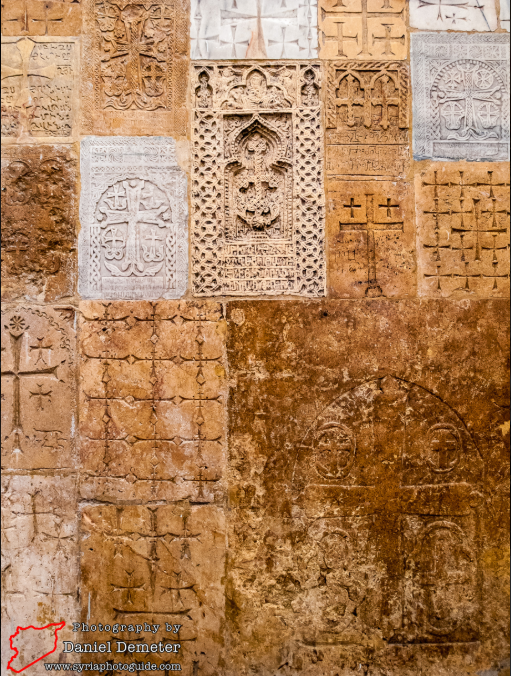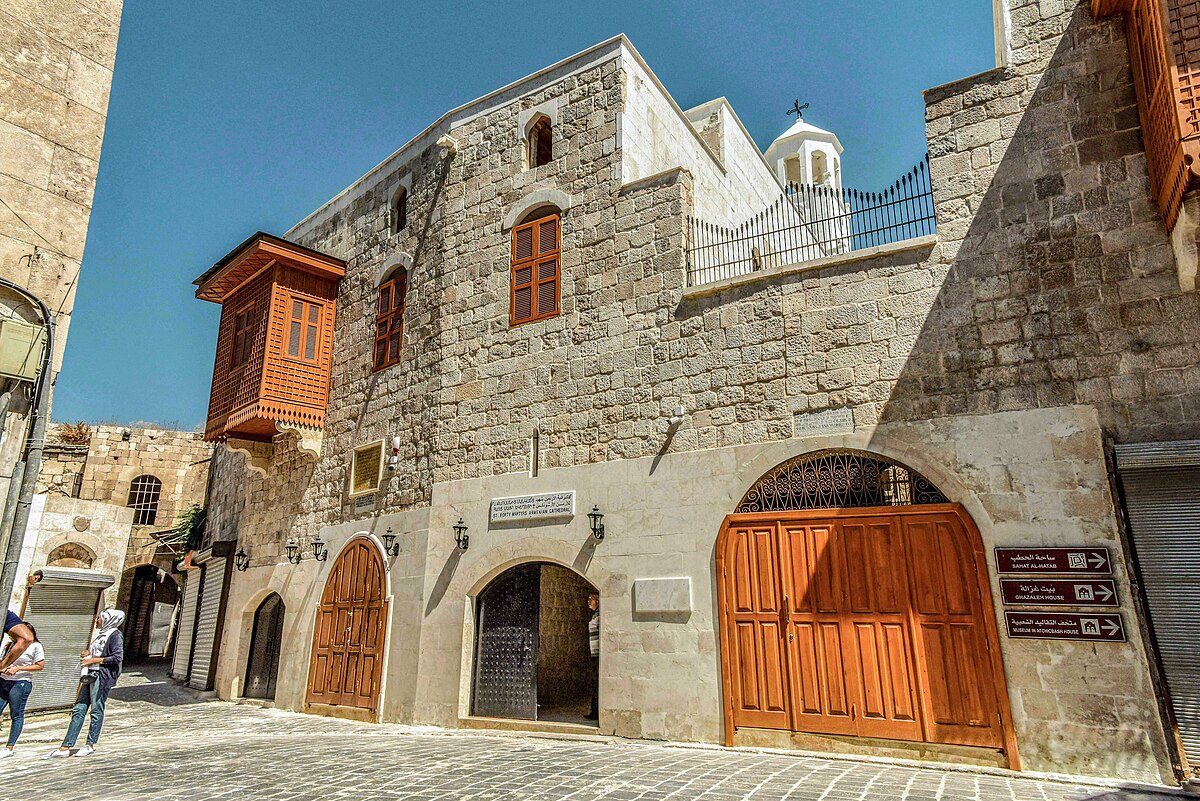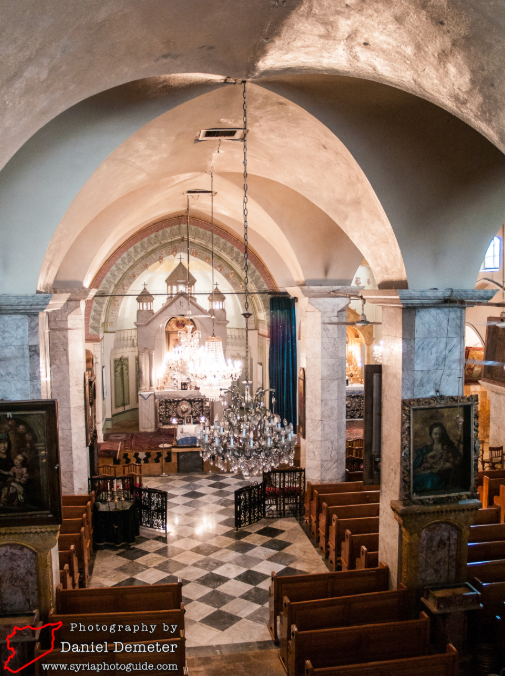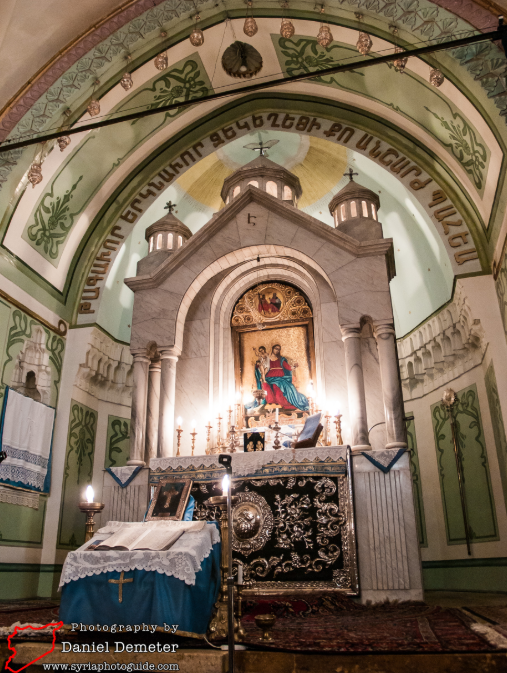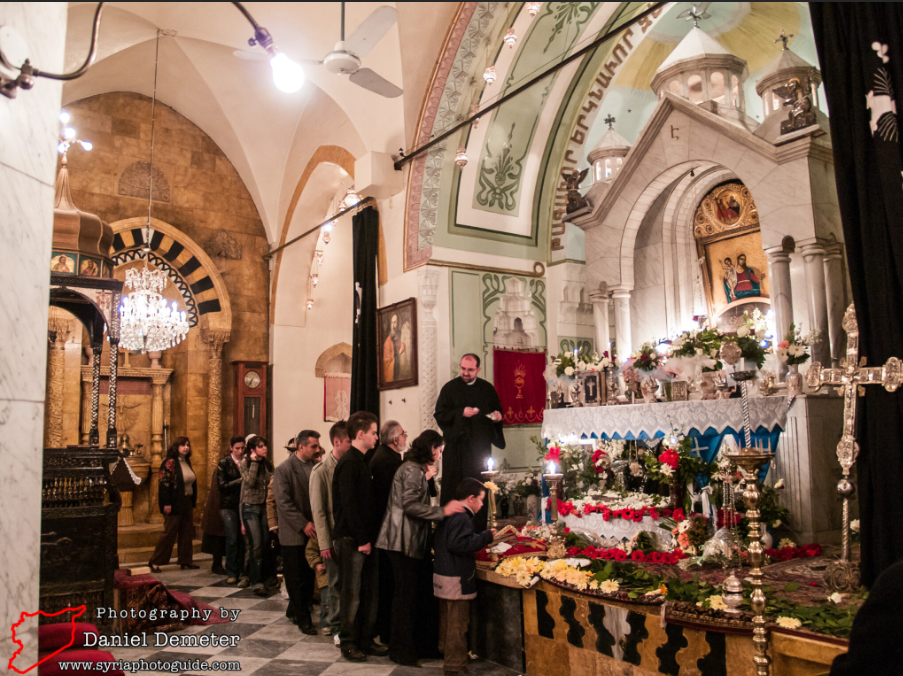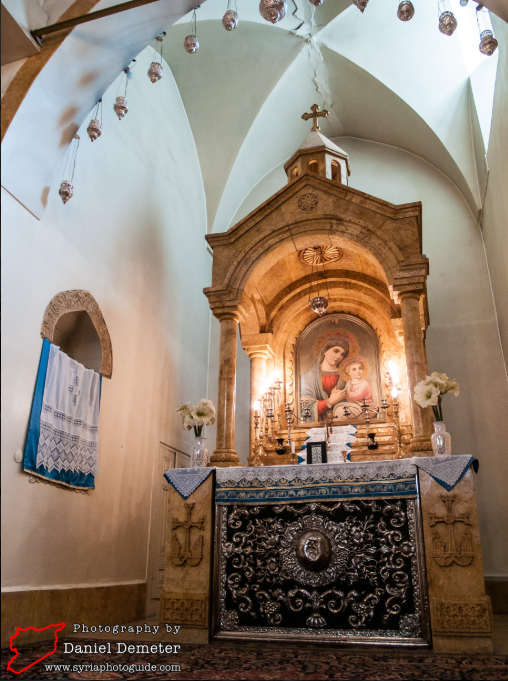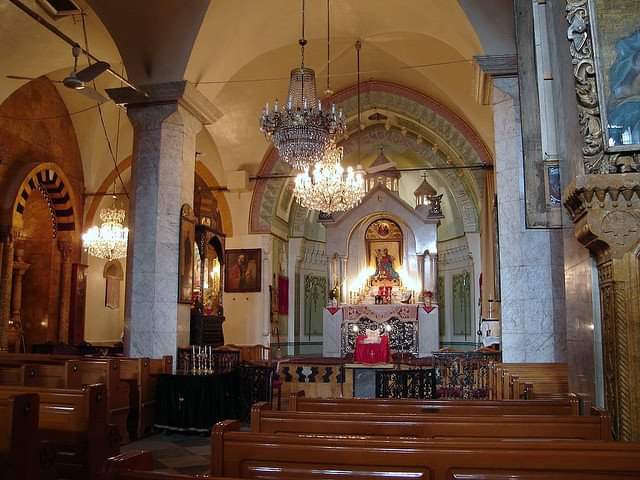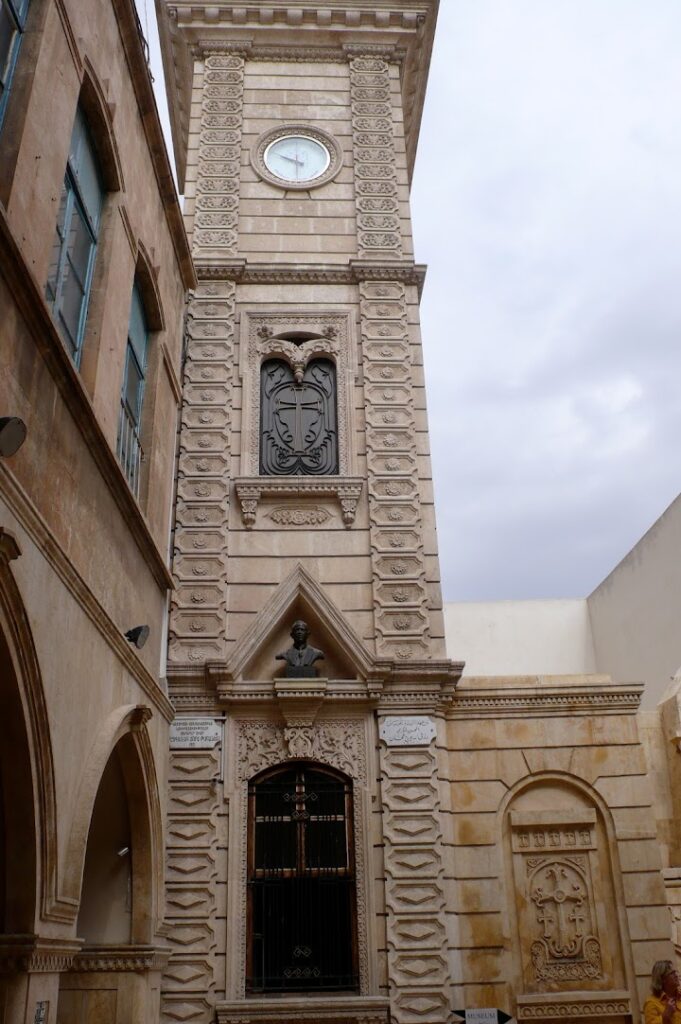It began as a small enclave for the Geloyan Armenians who arrived from Sebastia, and then evolved – aimed the neighborhood’s flourishing – into a minor cathedral that preserves the legacy of the Martyrs in Sebastia. The original hall, with its wooden ceiling, was replaced in 1912 by a basilica with three naves, while the bell tower put on a polygonal cone, the clock cast in Marash. The iconostasis, intricately carved from Aleppine Walnut, depicts the Forty Martyrs on a frozen lake. During the earthquake in 1822, the dome suffered cracks, prompting silk merchants to donate iron braces imported from Smyrna – still visible today. In World War I, the church opened its doors as a shelter, with survivors recording their names in three languages on the northern passage wall. The 2017–2019 restoration program revived the stained glass, Cilician plasterwork, and reinforced the bell tower with carbon fiber. The Chorale of Forty holds Mass in three languages, while an interactive app guides visitors through the Armenian migration path to Aleppo, illustrating the church’s role in safeguarding musical and linguistic heritage through its basement school.
